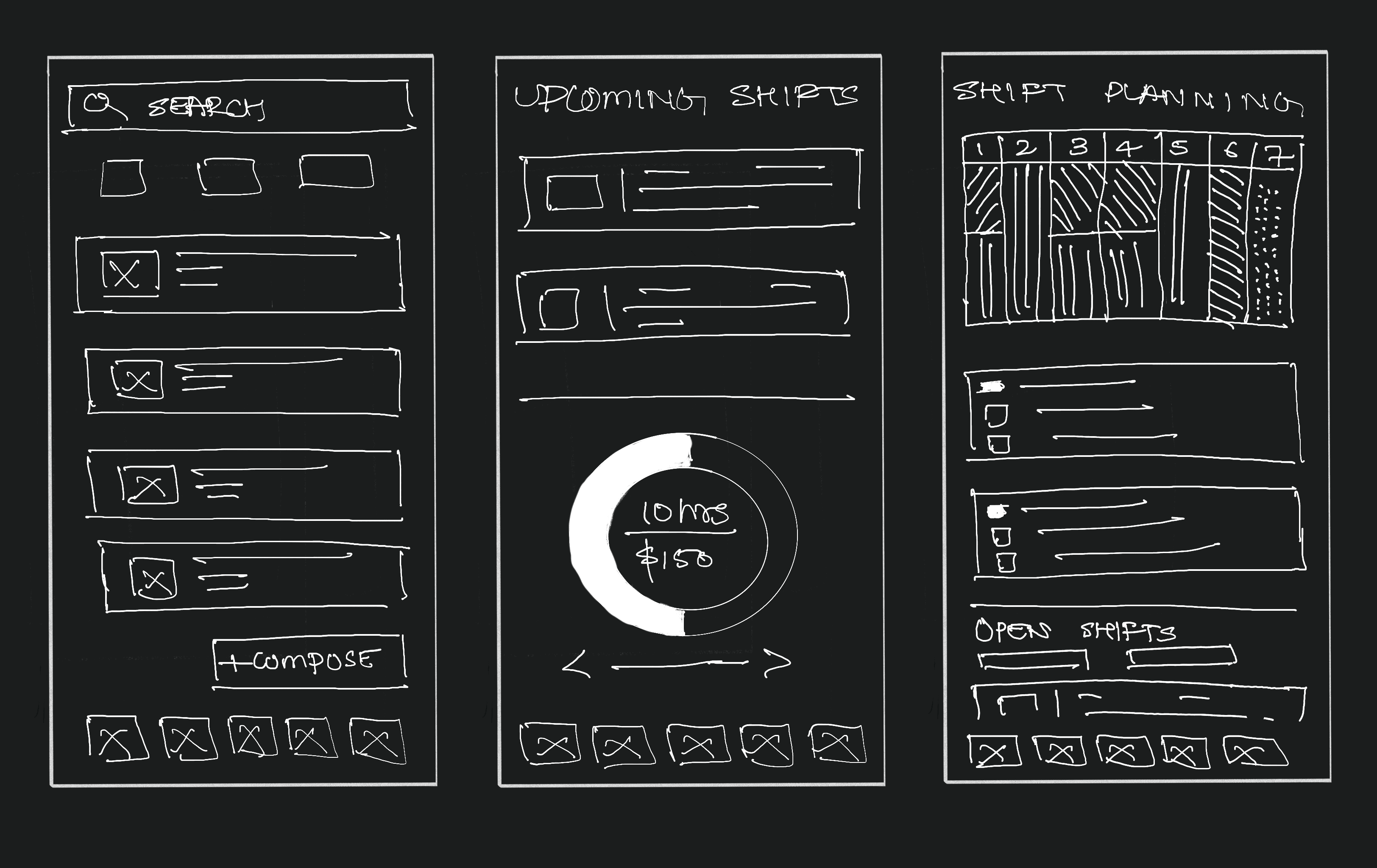ShiftMate @RIT
A mobile app to simplify part-time job management for student workers
At RIT, part-time student workers used the Humanity app to manage their shifts. While it covered the basics of scheduling, students still had to rely on other platforms for payroll and class schedules, and the overall experience felt fragmented. We redesigned this system as ShiftMate, a new app that simplifies shift management and brings payroll and scheduling into one unified place.
Problem
How might we simplify shift scheduling for student workers so they can balance work and academics more effectively?
Outcome
We created an app that unifies shifts, schedules, and payroll, making it easier for student workers to manage jobs alongside academics.
User research
findings & insights
We conducted interviews with 12 part-time student workers to understand their experiences with the existing scheduling system.
75%
Had difficulty tracking hours and payroll
Shifts were managed in one system, while payroll and completed hours were tracked elsewhere. Students had to jump between multiple platforms to see the full picture of their work, which made the process time-consuming and fragmented.
83%
Struggled to swap or release shifts
The existing app did not make it easy to release a shift to someone else. Instead, students often relied on group chats to coordinate changes, since the built-in process felt restrictive and inefficient.
67%
Wanted better reminders and notifications
Notifications existed but were limited in functionality. Students wanted customizable alerts that would help them stay on top of their classes and shifts.
Data Modeling
We translated raw interview data into themes, which then informed archetypes that highlighted the main behaviors and needs of student workers.
Affinity maps
We used affinity mapping to cluster interview insights into clear themes, which helped us prioritize the most pressing issues students faced.
Persona
We created multiple personas to capture different patterns of behavior among student workers, ensuring our solutions addressed a range of real needs.
Low fidelity
ideas & flows
We explored different ways students could view shifts, swap jobs, and check schedules. Sketching allowed us to map user flows quickly and shape how the core interactions should work.
Usability Testing
findings & iterations
We created sketches and mockups to test different flows, looking at how menus, objects, and gestures could come together to form an intuitive experience.
Before
All shifts appeared in a single list, which forced students to scroll and mentally separate today’s work from future commitments. This lack of hierarchy made it harder to know what to focus on.
After
We separated today’s shifts from upcoming shifts, giving students a clear sense of priority at a glance and reducing the cognitive effort of planning their day.
Before
The app only displayed work shifts, which meant students had to cross-check their class schedules in a different app. This extra step often led to conflicts or missed updates.
After
We created an integrated calendar that combines both work and class schedules. This allowed students to see their full day in one place and make informed decisions about availability.
Before
Notification settings were limited and not flexible, so students couldn’t tailor reminders to their needs.
After
We streamlined the default settings and added custom reminders, allowing students to choose how and when they wanted to be notified about shifts.
Before
Open shifts were scattered across the home screen with no context, so students struggled to tell which ones were relevant for them.
After
We moved open shifts into the shift manager page and added filters and sorting. This made it easier for students to quickly find and claim shifts that worked with their schedules.
New Features
key findings
Some issues could be fixed through redesign, while others required entirely new features to better support student workers.
Affinity maps
We used affinity mapping to cluster interview insights into clear themes, which helped us prioritize the most pressing issues students faced.
Digital Meal Pass
Paper meal passes were error-prone and easy to misplace. We replaced them with a digital pass generated automatically after a completed shift, ensuring accuracy and saving time.
Payroll Page
Pay details were only available in a separate portal. We introduced a dedicated payroll page within ShiftMate, giving students easy access to hours and wages in the same place as their schedules.
Interactive Experience
ShiftMate combined improved scheduling, clearer notifications, and new features like payroll access and digital meal passes into one app. The result was a simpler, more reliable system that helped student workers manage shifts, schedules, and pay without juggling multiple platforms.

















